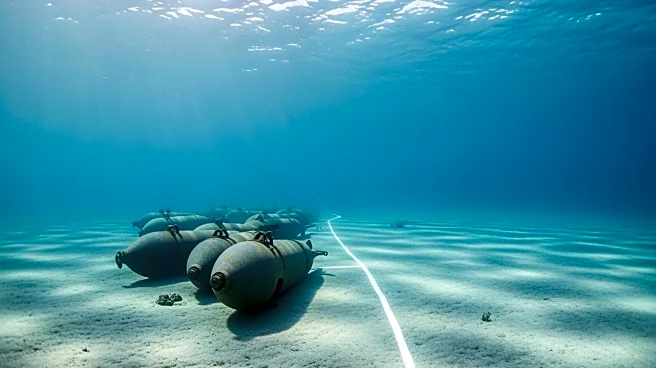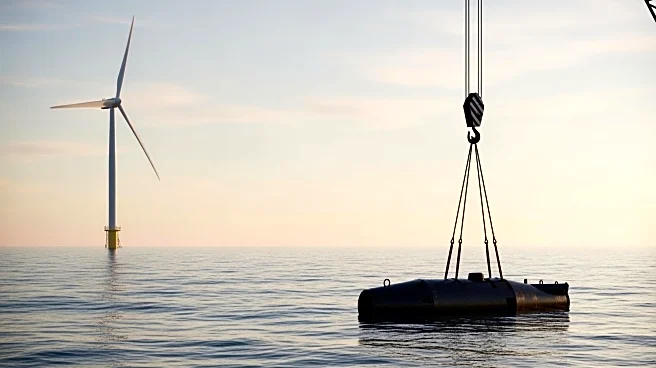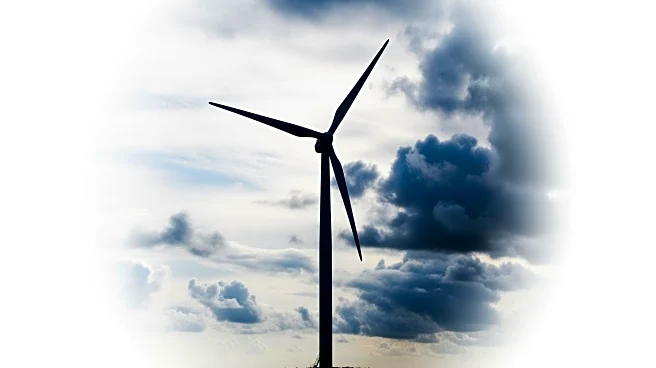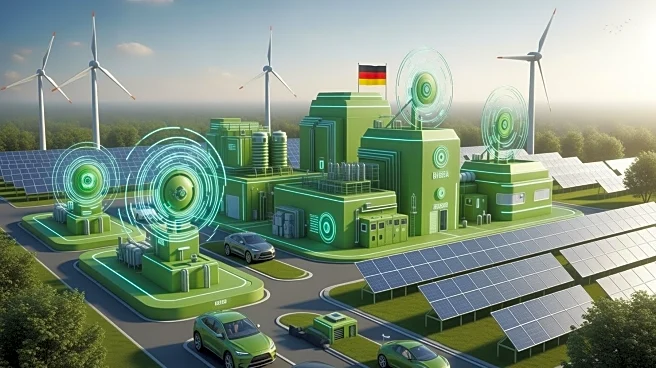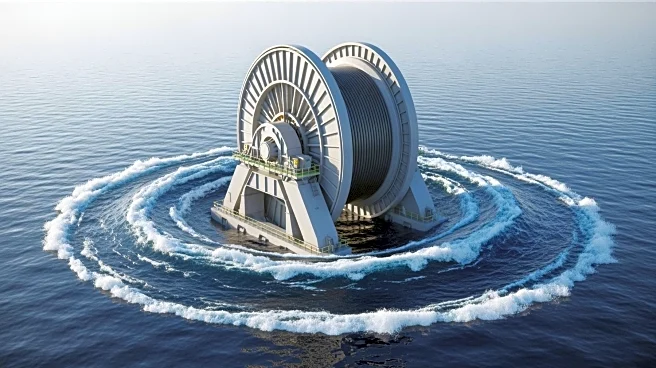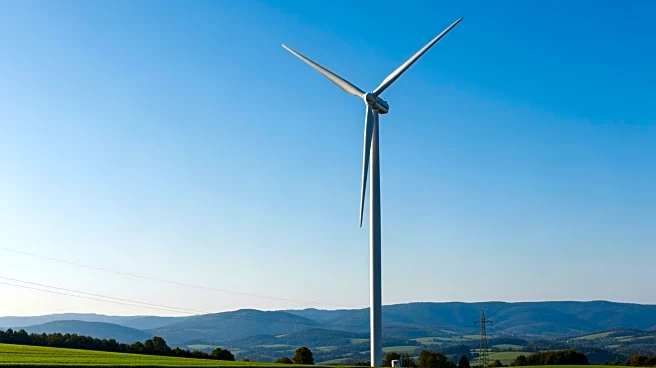What's Happening?
Vattenfall, a major energy company, has successfully cleared unexploded World War II ordnance from the site of its upcoming Nordlich offshore wind farm in the North Sea. Located over 50 miles north of Borkum
Island, near Germany's border with the Netherlands, the site was found to contain three sea mines, each with an explosive force equivalent to 200 to 300 kg of TNT. The discovery was made during extensive geophysical surveys conducted over the past two years. The clearance operation involved a complex permitting process and coordination with other companies, such as RWE, which is conducting pile driving in the area. A 'bubble curtain' was used to dampen the sound of the controlled explosions, ensuring minimal environmental impact. The successful removal of these hazards marks a significant step forward in the construction of the Nordlich wind farm, which is expected to have a capacity of 980 MW in its first phase, with an additional 630 MW planned for a second phase.
Why It's Important?
The clearance of these sea mines is crucial for the safe construction of what will be Germany's largest offshore wind farm. This project is part of a broader push towards renewable energy, which is essential for reducing reliance on fossil fuels and mitigating climate change. The Nordlich wind farm, once operational, will significantly contribute to Germany's renewable energy capacity, supporting the country's energy transition goals. The operation also highlights the ongoing challenges of dealing with historical ordnance in marine environments, which can pose significant risks to modern infrastructure projects. Successfully navigating these challenges demonstrates Vattenfall's commitment to safety and environmental responsibility, setting a precedent for future offshore developments.
What's Next?
With the site now cleared of explosive hazards, Vattenfall is set to begin construction of the Nordlich wind farm next year. The project is expected to be operational by 2028, providing a substantial boost to Germany's renewable energy output. The successful coordination with other companies and the use of innovative techniques like the bubble curtain may serve as a model for future projects facing similar challenges. As the project progresses, stakeholders will likely monitor its impact on local ecosystems and its contribution to Germany's energy mix.
